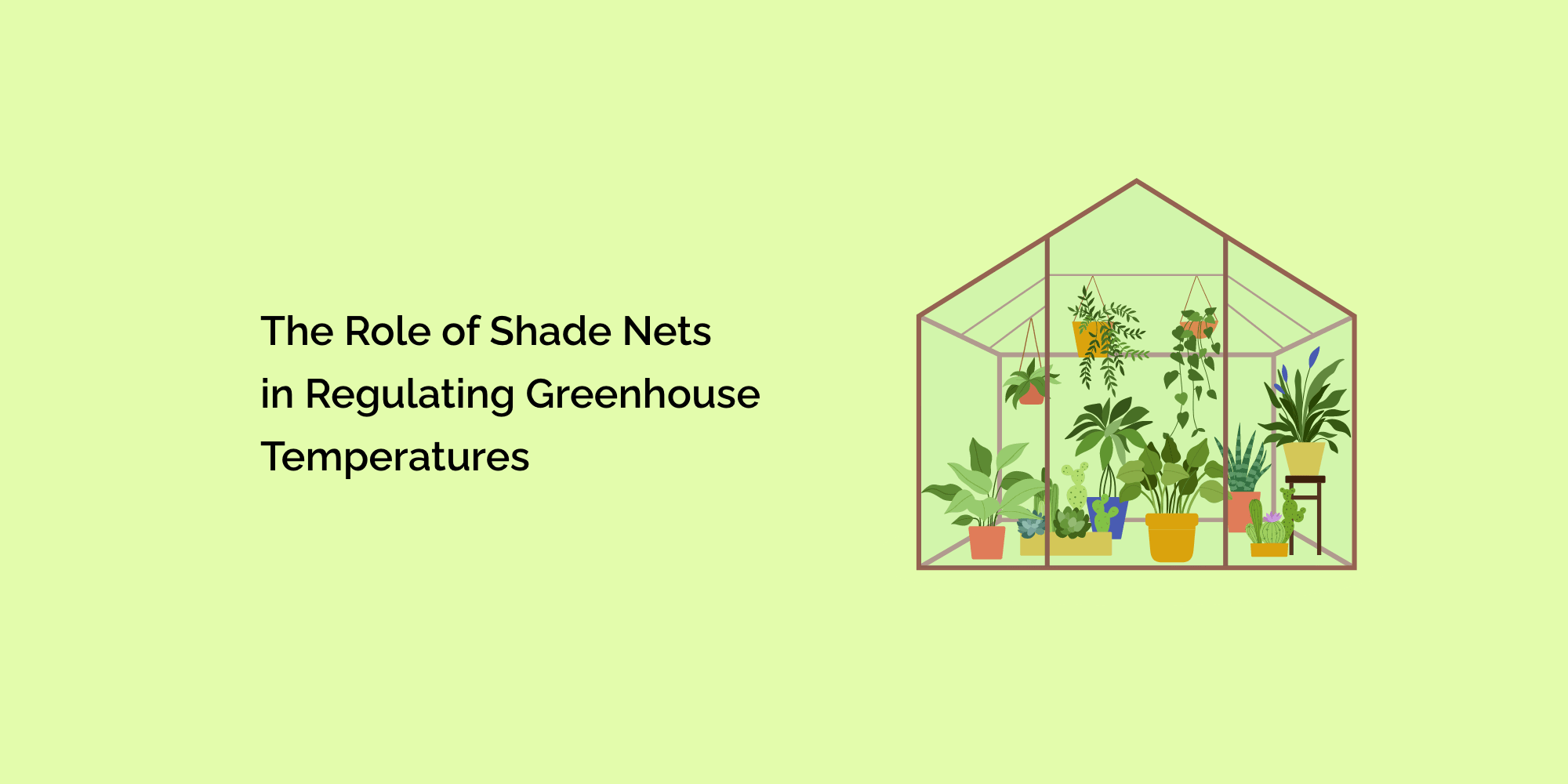Greenhouses offer a controlled environment for plants, but maintaining optimal temperatures can be a challenge, especially in regions with extreme heat.
This is where shade nets come into play as a vital tool for regulating greenhouse temperatures.
In this blog, we'll explore the essential role that shade nets play in creating a comfortable climate for plants and growers alike.
Understanding Shade Nets
Shade nets, also known as shade cloth or shade netting, are woven or knitted fabrics designed to filter sunlight.
They come in varying levels of shading, typically expressed as a percentage that indicates the amount of sunlight blocked. Common shading percentages include 30%, 50%, and 70%.
The choice of shade percentage depends on the specific needs of the plants being grown and the local climate.
The Benefits of Shade Nets in Greenhouses
1. Temperature Control:
-
Cooling Effect: Shade nets significantly reduce the amount of direct sunlight that enters the greenhouse. This reduces the internal temperature, preventing overheating during hot days.
-
Temperature Stability: By providing consistent shading, shade nets help maintain stable temperatures within the greenhouse. This prevents temperature fluctuations that can stress plants.
2. Sunburn Prevention:
-
Protective Barrier: Shade nets act as a protective barrier against intense sunlight. They prevent leaves and fruits from getting scorched or sunburned, which can be a common issue in greenhouses.
-
Reduced Water Stress: Cooler temperatures under shade nets reduce plant transpiration rates, helping to conserve water and reduce the risk of dehydration.
3. Pest and Disease Management:
-
Moderated Humidity: Shaded environments tend to have more moderate humidity levels. This can discourage the proliferation of certain pests and diseases that thrive in dry, hot conditions.
-
Better Airflow: Shade nets often come with small openings that allow for improved airflow within the greenhouse, reducing the risk of stagnant air where pests and diseases can flourish.
4. Energy Efficiency:
-
Reduced Cooling Costs: With less direct sunlight entering the greenhouse, the need for active cooling systems like fans or evaporative coolers is reduced. This translates into energy savings.
-
Lower Heat Stress on Equipment: The reduced internal temperature also benefits greenhouse equipment, as it operates under less stress.
5. Crop Flexibility:
- Adaptability: Shade nets are versatile and can be easily installed or removed as needed. This adaptability allows growers to adjust shading levels based on the changing needs of different crops or the season.
6. Enhanced Photosynthesis:
- Optimal Light Levels: While shade nets reduce the intensity of sunlight, they still provide sufficient light for photosynthesis. This ensures that plants can continue to grow and produce energy even in reduced light conditions.
Choosing the Right Shade Net
When selecting a shade net for your greenhouse, consider factors such as:
- Shade Percentage: Choose the percentage that aligns with the specific requirements of your plants and local climate.
- Material Quality: Look for durable materials that can withstand UV exposure and the rigors of outdoor use.
- Ventilation: Ensure that the shade net allows for adequate airflow to maintain good ventilation.
- Installation: Consider ease of installation and removal, especially if you plan to change shading levels periodically.
Conclusion
Shade nets are an indispensable tool for greenhouse growers seeking to maintain optimal temperatures and create a favorable environment for plant growth. They offer a cost-effective and energy-efficient solution to combat excessive heat, prevent sunburn, and manage pests and diseases. With the ability to customize shading levels, greenhouse operators can adapt to the unique needs of different crops and the changing seasons, ultimately enhancing their agricultural yield and overall success.








